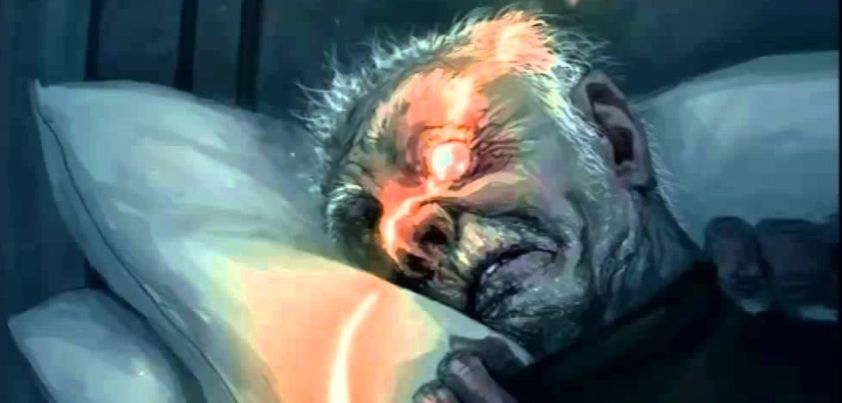 In this Gothic horror story by Edgar Allan Poe, the narrator describes how cleverly he or she has planned and carried out the murder of an old man. The only reason given is fear of what is described as the old man’s ‘vulture eye’. The narrator’s purpose in telling the story is to convince the audience that he or she is not mad. There are a number of ironic aspects to the story, perhaps the greatest being that in trying to prove his or her sanity, the narrator clearly demonstrates the opposite. Themes: mental illness, fear, time, guilt vs. innocence.
In this Gothic horror story by Edgar Allan Poe, the narrator describes how cleverly he or she has planned and carried out the murder of an old man. The only reason given is fear of what is described as the old man’s ‘vulture eye’. The narrator’s purpose in telling the story is to convince the audience that he or she is not mad. There are a number of ironic aspects to the story, perhaps the greatest being that in trying to prove his or her sanity, the narrator clearly demonstrates the opposite. Themes: mental illness, fear, time, guilt vs. innocence.
Original Text / PDF / Audio (2,200 words)
General Comments
It is interesting that Poe did not identify the narrator, either by gender or in terms of his or her relationship with the old man. He or she could be a friend, relative (perhaps even a child) or care-giver. This dehumanizes both characters, leaving only the conflict between a crazed mind and whatever is represented by the “evil eye”
At the very beginning of the story, the narrator tells us that he or she has always been very nervous and that this disease had improved his or her senses. Being nervous at times is quite normal. It is certainly not a disease. What Poe is probably talking about here is a medical condition known at the time as “nerves”. It is known today as “Generalized Anxiety Disorder” (GAD) and characterized by uncontrollable and often unnecessary worry about common occurrences and situations.
For me, one of the most interesting aspects of this story is the way that Poe develops the character of the narrator. I can’t see any indication of psychological studies in Poe’s biography. Nevertheless, his protagonist exhibits five characteristics recognized today as being common among people suffering from GAD. These are:
- difficulty sleeping – sitting up in bed late, listening to deathwatch beetles in the wall;
- irrational fears – being afraid of the old man’s “evil eye”;
- perfectionism – telling us over and over how carefully he or she planned and carried out the murder;
- self-doubt – trying to justify why he or she isn’t mad; and
- panic attacks – losing control in front of the policemen at the very end of the story.
Video Versions
2008 Short Film: In this film we know the identity of the murderer; he is a servant who cares for the old man. The old man’s “evil eye” drives the servant to madness, which is reflected in the look of achievement on his face as he dismembers the body and holds up the old man’s head in triumph. Watch and enjoy!
1953 Animated Film: This short animated adaption of the story is narrated by the well-known British actor James Mason. It is quite true to the original, so we don’t know the identity of the murderer. The film was well received and nominated for an academy award for best short subject cartoon in 1954. Watch and enjoy!
Radio Play Versions
Nightfall (1980): This radio drama series aired on CBC Radio from 1980 to 1983. It mostly featured supernatural and horror stories. Some of the episodes were so terrifying that CBC received complaints and some radio stations on the network dropped the series. Despite this, Nightfall went on to become one of the most popular shows in CBC Radio history. In this version of the story, an old farmer living alone hires a homeless man to help him with farm work. The two become friends, but the farm worker comes to believe that the old farmer’s cloudy eye is a sign that his body has been taken over by an evil spirit. He decides to kill the old man to release his body from the spirit. From here on (the actual murder) the dialogue follows the original story quite closely.
The Weird Circle (1944): This 30-minute mystery/horror radio series aired on NBC from 1943 to 1947. This was at the peak of what has been called “The Golden Age of Radio”. The killer here is identified as the nephew of the old man who hears voices in his head telling him to destroy (pluck out) the “evil eye” using an ancient knife hanging on the wall. In order to extend the story to fit the allotted time, a neighbor is introduced who likes to collect and tell stories of unusual deaths.
??????????????????????????
Unfortunately with a comment like this it is impossible to know what it is you can’t understand… the Victorian English or the story. As your displayed ISP is in the UK, I can only assume it is the story. What we have here is a mad narrator trying to prove that he/she is not mad. Unless you bear this in mind, some of his/her behavior (especially in the police interview at the end) can seem very confusing.
Your way of explaining everything in this paragraph is in fact fastidious, all be capable of without difficulty understand it, Thanks a lot.
Awesome article.